Brian: Hi John. From what I understand you took a different approach to building your board when you founded the St. Petersburg Arts Alliance in 2012. Can you share what you did and why you did it?
John: Hi Brian. I didn’t think I was taking a different approach to building my board from what I have learned about and coached others on over the years. However, what perhaps was different is that I wrote down three things to say to a prospective board members and then rehearsed them so I wouldn’t trip up or “wimp out” when I looked a prospective board member in the eyes and told them what we need.
Brian: And what is that?
John: First, I say we want to be your charity of choice, or at least in the top two. If you are on several other boards you cannot advocate for them all, and the potential for conflict of interest in fundraising arises. Together we are building a creative business and we are asking you to join our board to help us. I want your active participation and even to argue with me. Everyone has a voice on the board and together we will build the Arts Alliance.
 Second, we are a fundraising organization established to help our arts community and so we must lead with 100% board giving. Our board has established board member giving at the Producer level of $1,000, which allows us to pay for expenses that other funders, corporations, and foundations do not.
Second, we are a fundraising organization established to help our arts community and so we must lead with 100% board giving. Our board has established board member giving at the Producer level of $1,000, which allows us to pay for expenses that other funders, corporations, and foundations do not.
Your annual fund gift is our lifeblood. Of course if something happens one year we will not kick you out! I should note that amount is a stretch gift for most of them, especially the artists. Often we hear in the community, “I donate my time” or “I serve on a working board” as an excuse for not giving. And yet he or she gives to another group, or to their church, or the school their kids attend, or their college’s alumni fund, yet balk at the board they serve on. I can’t figure that one out.
Third, we ask you to support our annual benefit. Purchase tickets, sell tickets – the benefit’s goal is to reach out to others, friend-raising as well as fundraising. Bring your friends and have a good time.
Brian: What I found different about that is most boards start out with the founder’s friends and close associates, and they’re asked for sweat equity above all else. It’s not until the organization is a number of years old and has professional paid staff for the hands-on work that the role changes and is more focused on resource development, including personal giving. How do potential board members receive your message?
John: It’s not always easy, and sometimes the prospective board member conversation does not continue. However, every conversation has ended with something like “Thank you for being up front with me.” And now I am blessed with a working and giving board of professionals who represent a diversity of the arts and supportive businesses that we all want on our boards.
A final note, I find that once a board member contributes $1,000 he or she is a committed volunteer, having invested in the Alliance and so often they call me and ask what else have I got for them to do. Board members can be leaders and advocates if we prepare them properly and professionally.
Brian: At the Alliance you had the benefit of starting from the ground up. How was that helpful in getting the board you wanted? And how does that differ from the approach you take with existing organizations and their boards?

John Collins, Executive Director, St. Petersburg Arts Alliance
John: Establishing a board from the ground up was not difficult, and of course it’s very helpful to have everyone on the same page from the beginning. However, finding the right people to lead the organization — and who fit well together — was important and took time. It was several months after we had a vice chair, secretary, and treasurer that we enlisted our chair. It is vastly different when working with existing boards.
First we have to review and discuss the bylaws, and I must often take into account differing philosophies that have been in place for years. Most directors simply don’t know what they don’t know as most have not served on other boards, so they need to hear examples of successful governance. Some boards have to be educated that fundraising is paramount. They don’t often realize, and are surprised to hear, that when they approve the budget they are ultimately responsible for raising the budgetary needs.
Brian: Wow, that’s fascinating that your chair was the fourth person you brought on! But I’m really interested in this idea that approving the budget means ultimate responsibility for raising the budgetary needs. I’ve worked with tons of boards and can’t say I ever feel the board owns that level of responsibility. Can you expand on how this concept plays out for you?
John: It was a revelation for me a few years ago as I was filling out various state and federal tax forms that require board member names. I’ve found most trustees or directors do not even know their names are registered on various documents!
So, I believe once they approve the budget they can’t abdicate their responsibility to the organization to meet the budget. And most budgets include unearned income – contributions. So the budget doesn’t just happen by itself, or by saying it’s the executive director’s job. Bottom line is if the organization doesn’t make budget and the executive director leaves, the board is left holding the bag. They have to know up front it’s their responsibility to help.
Brian: That’s a powerful message to send up front. Quite different than the sensibility we usually see, which often includes an almost apologetic minimizing of what will be required of board members. So I’d like to come back to something you mentioned earlier. You have a minimum board gift requirement of $1,000. My readers know that generally I’m not a fan of board minimums because it’s often a substitute for asking all board members to give personally significant gifts. Knowing you, I’m assuming this isn’t the case at the Alliance. So what do you do to ensure all your board members are giving to their potential?
 John: My personal experience is that almost every time I hear “We can’t set a minimum because that would cause others to give less than what they otherwise would give,” it’s an excuse for most to not give at all. Of course it depends on the size and maturity of the organization.
John: My personal experience is that almost every time I hear “We can’t set a minimum because that would cause others to give less than what they otherwise would give,” it’s an excuse for most to not give at all. Of course it depends on the size and maturity of the organization.
I recently learned that Make a Wish here in Florida has an $8,000 annual suggested give or get policy because that is the cost to grant a wish to a child. I think that’s brilliant! Some of their board members (including young millennials!) write a check and some host events that bring in much more. Mainly I want to educate boards that their organization needs a financial foundation and they need to help provide it.
For me, giving is a very personal discussion with each board member. Every year. Having a suggested minimum can be a springboard to discussing larger contributions.
Brian: Thanks John. One last question. If you could have one wish for the non-profit community, what would it be?
John: I would wish for more accessible non-profit training for board members and executive directors. So many volunteer with passion, but are hamstrung by lack of knowledge and experience.
Brian: Amen to that. John, thanks for your perspective and your work in St. Petersburg. Best of luck to you and the Alliance.
John: Thank you, Brian.
 The St. Petersburg Arts Alliance is the only 501(c)3 nonprofit dedicated to raising money and advocating for the entire St. Petersburg, Florida creative community – artists, arts and cultural organizations, and creative businesses. They raise money through individual and corporate gifts, event sponsorships, and state and federal grants that support community-wide arts efforts.
The St. Petersburg Arts Alliance is the only 501(c)3 nonprofit dedicated to raising money and advocating for the entire St. Petersburg, Florida creative community – artists, arts and cultural organizations, and creative businesses. They raise money through individual and corporate gifts, event sponsorships, and state and federal grants that support community-wide arts efforts.





